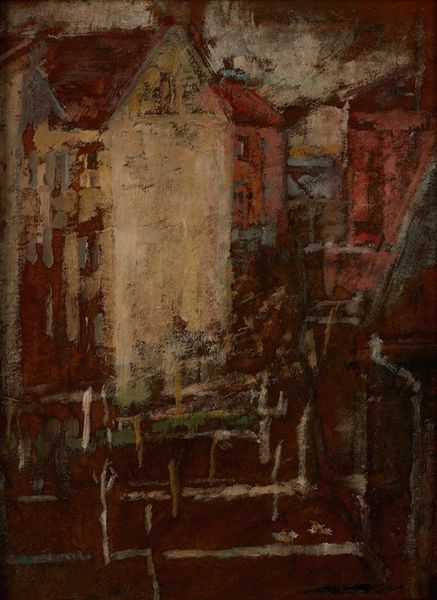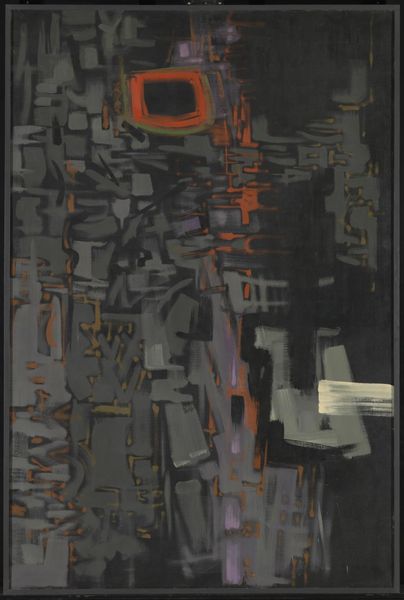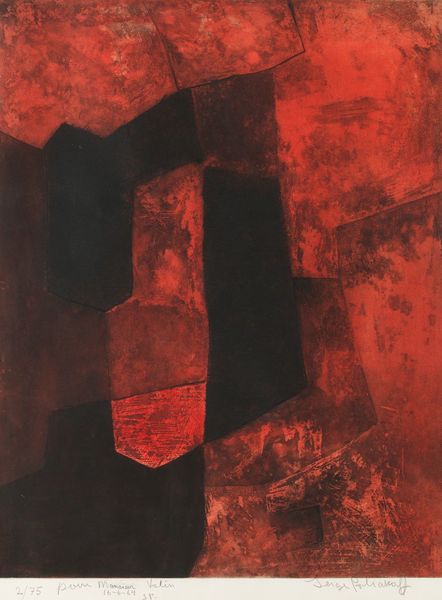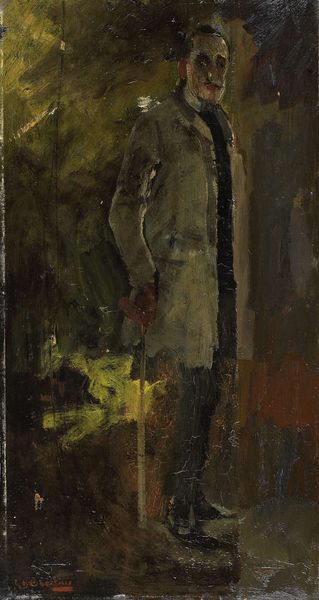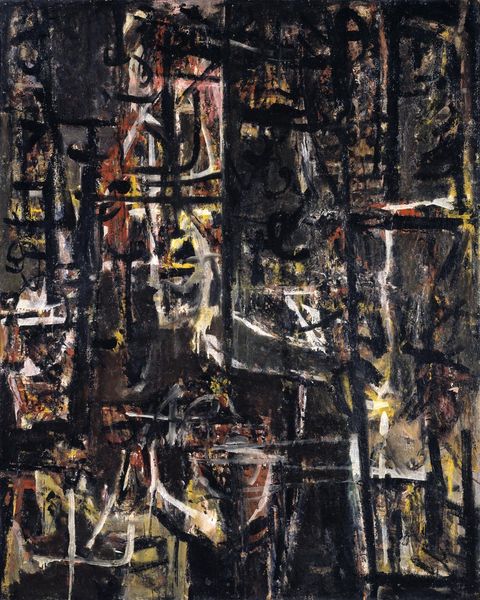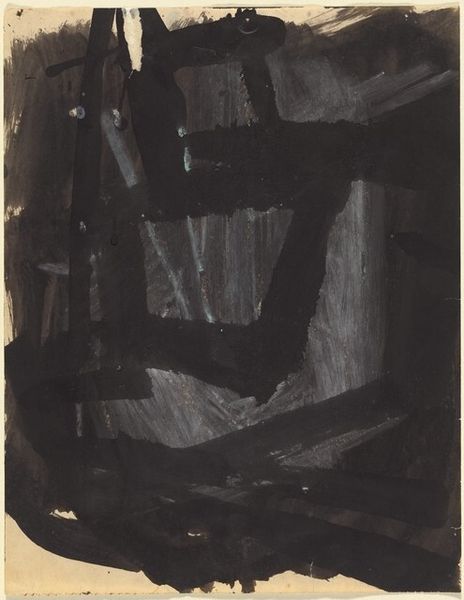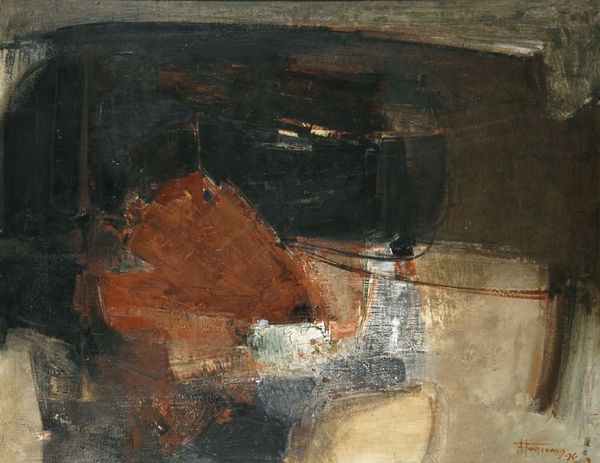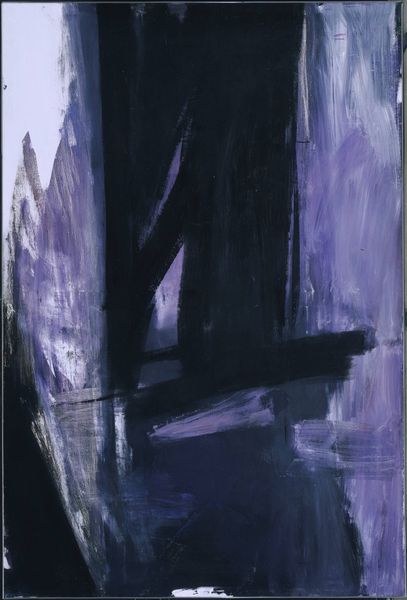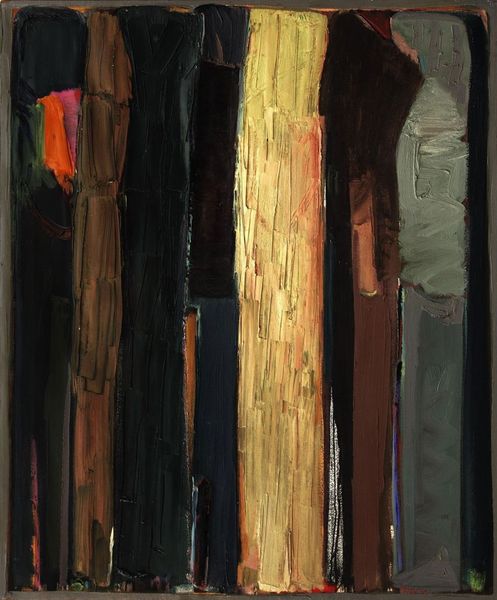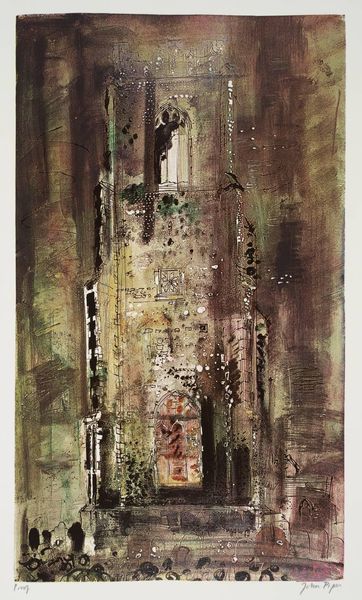
oil-paint, impasto
#
abstract-expressionism
#
abstract expressionism
#
oil-paint
#
form
#
oil painting
#
impasto
#
matter-painting
#
abstraction
#
line
#
monochrome
Dimensions: overall: 129.8 x 88.7 cm (51 1/8 x 34 15/16 in.) framed: 131.1 x 89.8 cm (51 5/8 x 35 3/8 in.)
Copyright: National Gallery of Art: CC0 1.0
Editor: So, here we have "Peinture 130 x 89 cm, 6 mars 1955" – created in 1955 by Pierre Soulages. It's an oil painting, and my immediate feeling is that it's powerfully austere. What strikes you first about this piece? Curator: Its relationship to the cultural landscape of post-war Europe. Remember, 1955 was a period grappling with the aftermath of unprecedented devastation. Soulages' use of nearly monochromatic black resonates with the somber mood, but look closely at the texture created through the impasto technique. Don't you find something defiant in it, perhaps pushing against the pre-war emphasis on representational art? Editor: I see what you mean, like a rejection of previous norms. The texture does give it depth, preventing it from being simply depressive. Do you think the scale, 130 x 89 cm, plays a role in how we experience that defiance? Curator: Absolutely! Its imposing size, especially in the context of smaller, more intimate pre-war works, signifies a desire to break free. Think about how museums and galleries, institutions built on pre-war aesthetics, were starting to exhibit works like this. It reflects a shift in the public's willingness to engage with art that confronted rather than comforted. Do you perceive it challenging conventional artistic power dynamics in any way? Editor: It does feel challenging; its refusal to depict anything representational almost dares the viewer to find meaning. How much was Soulages involved with those changes? Curator: He actively shaped them. By creating a space for subjective experience in an increasingly uncertain world, Soulages gave abstract art a very real public voice and demonstrated its political power to subvert institutional artistic practices. Editor: That's a fascinating perspective! I’d never considered abstraction quite so… politically charged. Curator: Exactly. And the ‘politics of imagery’— in its moment. The reception of abstract art always depends on socio-historical factors and who has the platform to legitimize abstraction as valuable and worth preserving. Editor: Well, it’s given me a lot to think about in terms of how art reflects and even shapes society! Curator: And for me too! I always find something new to think about. Thank you!
Comments
No comments
Be the first to comment and join the conversation on the ultimate creative platform.
